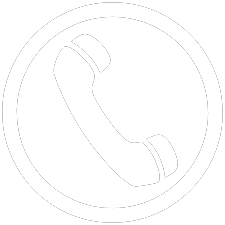Am I suitable for ICL implants?
Patients with a shallow anterior chamber and a narrow drainage angle are not suitable for ICL surgery. Patients who are pregnant and nursing should not have any form of refractive eye surgery.
Mr Voyatzis will discuss with you the suitability for ICL surgery following a careful and detailed evaluation of your eyes.
How long does the operation take?
ICL surgery is a day-case procedure. Usually both eyes are operated on on the same day. The surgery itself usually takes 15 minutes per eye.
Does the procedure hurt?
No, this is a completely pain free the procedure. Anaesthetic drops are used to completely numb the eye before the beginning of the procedure. Additionally sedation can be given to keep you relaxed during the operation. There is also the option of a General Anaesthetic but it is very rarely necessary.
How quickly will my vision recover after ICL surgery?
Your vision will start to improve a few hours after the surgery, although it will continue to improve in the days following the operation. It is very important to understand though that the recovery time can vary significantly between individuals and even between the eyes of the same patient.
Are the ICL implants permanent?
No, the implants are readily removable.
Will I be able to feel or see the lens after the surgery?
No, the ICL can not be felt after it is implanted. It will also not be noticeable to yourself or others after the surgery.
Are ICL implants safe?
ICL implants are a popular and safe alternative to laser refractive surgery. The ICL lenses have been introduced more than 20 years ago and more than 800,000 lenses have been implanted worldwide since then. The ICL system has earned a reputation for proven patient satisfaction and long-term safety.
What are the risks?
Overall, ICL surgery is very safe and effective. As with any procedure though there are risks to consider.
The most common complication with any refractive procedure is overcorrection or under-correction. Because the EVO lens can be removed, adjustments can be made to reduce any sort of overcorrection or under-correction. The same risks apply to the second surgery.
Halos & Night Glare
In any refractive procedure there is a possibility of halos and glare around lights at night. The symptoms usually improve with time.
Damage to the Crystalline Lens (Development of cataract)
Since EVO is placed inside the eye, there is potential risk in touching the eye’s natural (crystalline) lens. While occurring in less than 1.5% of patients, any damage to the natural lens may cause an opacity (cataract) of the lens. In the most serious case, this may require removal of the cataractous natural lens and replacement with a synthetic lens.
Increase in Eye Pressure
In some cases, an increase in eye pressure can occur as a result of the procedure. If this occurs, it may quickly be corrected with additional medication or surgical intervention.
Risk of Infection
All surgical or refractive procedures involve some form of invasiveness, which means there is a risk of infection. This potentially very serious complication is very uncommon (Less than 1 in a thousand).
Do I need long term follow up after ICL surgery?
Yes. An annual review of your vision and eye health is advisable.
How much does the ICL implantation cost?
For prices and enquiries, please contact:
Miss Ines Ribeiro
+44 (0) 2074594045
admin@georgevoyatzis.co.uk
